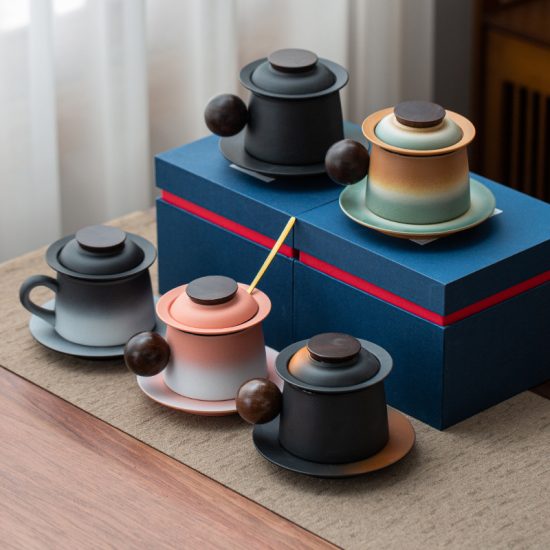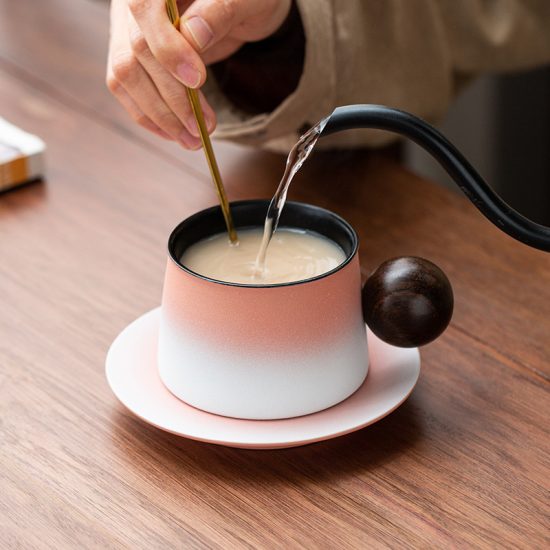Ceramic cups hold cultural significance, symbolism, and traditions in various societies around the world. Here are some examples of how ceramic cups are woven into cultural practices:
- Japanese Tea Ceremony: In Japanese culture, the tea ceremony (chanoyu) holds deep cultural significance. Specialized ceramic tea bowls called chawan are used in this traditional ceremony. The chawan represents harmony, respect, and tranquility. The choice of chawan, its design, and the way it is handled during the ceremony reflect the aesthetic principles of wabi-sabi, embracing imperfection and appreciating the beauty of simplicity.
- Chinese Gongfu Cha: Gongfu Cha is a Chinese tea brewing method that emphasizes the art and skill of tea preparation. Ceramic teaware, including teapots and cups, plays a vital role in this ceremony. The yixing clay teapots, known for their porous nature and ability to retain flavor, are highly prized. Ceramic cups used in Gongfu Cha are often small and unglazed, allowing the tea’s fragrance and taste to be fully experienced.
- Moroccan Mint Tea Tradition: In Moroccan culture, serving mint tea (Atay) is a long-standing tradition of hospitality and social connection. The tea is traditionally poured from a pot into small ceramic cups from a considerable height to create a frothy layer on top. The intricate designs and vibrant colors of the ceramic cups reflect Moroccan artistic traditions and add visual appeal to the tea-serving ritual.
- Indigenous Ceremonies: Many indigenous cultures incorporate ceramic cups into their traditional ceremonies. These cups may have specific designs, symbols, or patterns that hold cultural and spiritual significance. They are used in ceremonies for offerings, healing rituals, communal gatherings, or celebrating important milestones. The cups may be passed down through generations and hold ancestral connections and spiritual energy.
- Commemorative Cups: Ceramic cups are sometimes created to commemorate specific events, festivals, or cultural traditions. They may feature symbols, emblems, or images associated with a particular culture or historical event. These cups become cherished keepsakes and are used during celebrations or as collectible items that preserve cultural memories.
- Wedding and Ceremonial Cups: In many cultures, ceramic cups are used in wedding ceremonies as symbols of unity and shared experiences. They may be engraved, decorated, or personalized to represent the couple’s identity or cultural traditions. Couples may drink from a shared cup or exchange cups as a sign of their commitment and union.
- Symbolic Meaning: Ceramic cups can also hold symbolic meanings within cultural contexts. They can represent hospitality, friendship, connection, abundance, spirituality, or cultural identity. Specific shapes, colors, or patterns on the cups may carry symbolic messages or reflect cultural values and beliefs.
These examples highlight the cultural significance and rich symbolism associated with ceramic cups. They showcase how these everyday objects transcend their utilitarian function to become vessels of tradition, artistry, and cultural identity. Ceramic cups play an integral role in rituals, ceremonies, and cultural practices, connecting individuals to their heritage and reinforcing communal bonds.


